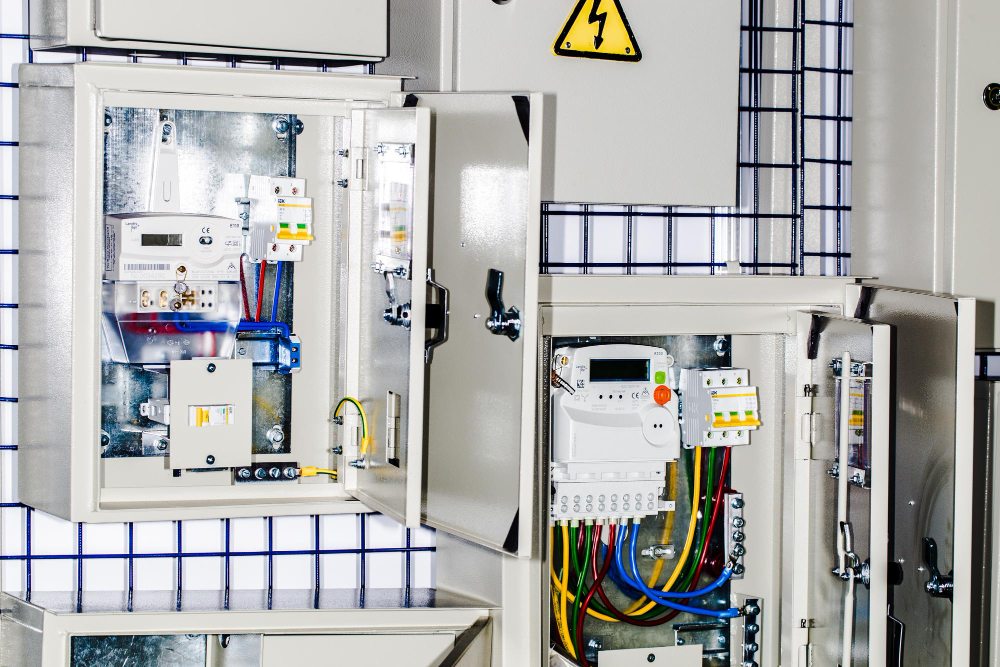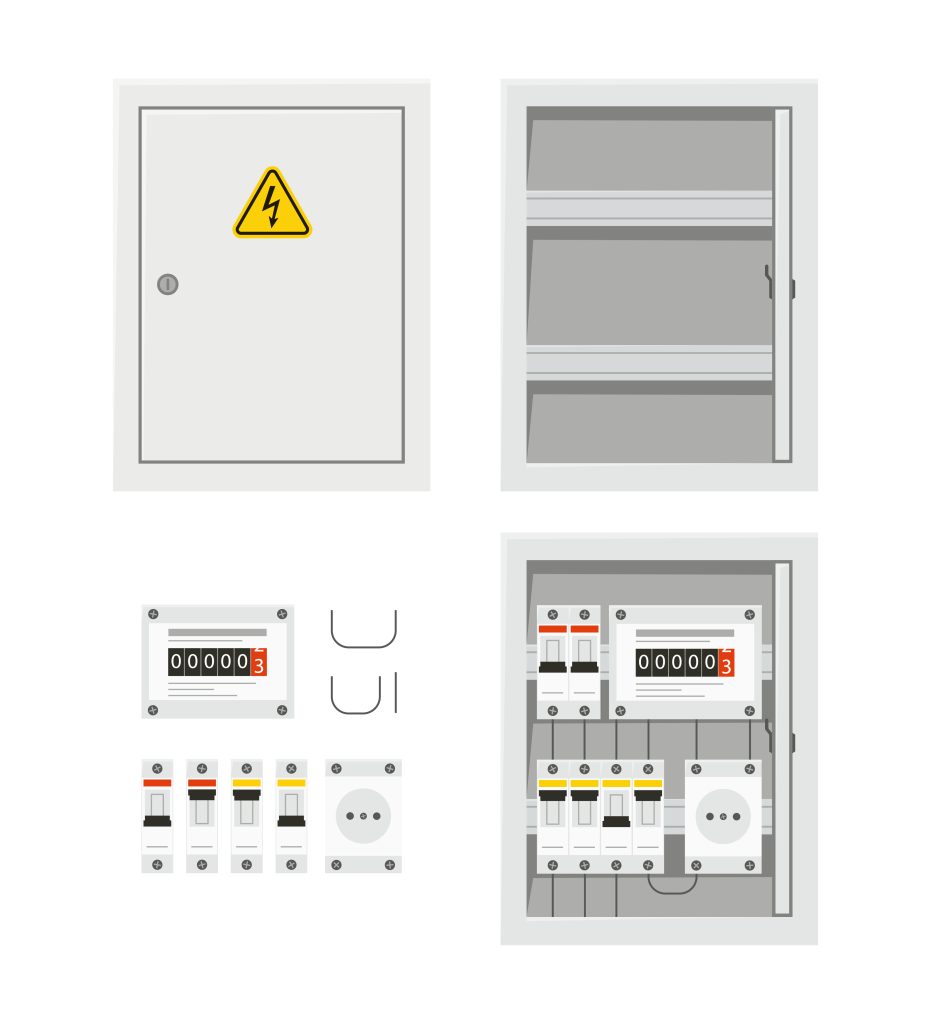17th May 2023
A circuit breaker panel, also known as an electrical panel, is an essential component of any building’s electrical system. It is responsible for distributing and controlling electrical power to all the electrical equipment and appliances in the building. Understanding how a circuit breaker panel works and how to maintain it can help prevent electrical fires, ensure the safety of the building’s occupants, and avoid costly repairs.

In this guide, we will discuss the different components of a circuit breaker panel, how it works, and the various types of circuit breakers. Whether you are a homeowner, a building manager, or an electrician, this guide will provide you with the knowledge and information you need to keep your circuit breaker panel functioning safely and efficiently.

There are several types of circuit breaker panels, including:
Main Breaker Panels: This is the most common type of circuit breaker panel used in residential and commercial buildings. It has a built-in main breaker that controls the power supply to the entire panel.
Main Lug Panels: This type of panel does not have a built-in main breaker. Instead, the power supply is controlled by a separate breaker or switch located outside the panel.
Sub-Panels: These panels are typically used in larger buildings where there are multiple circuits. They are connected to the main panel and are used to distribute power to specific areas of the building. Sub-panels can be either main breaker panels or main lug panels.
Power Distribution Panels: These panels are designed to handle high levels of power, typically 1200 amps or higher. They are commonly used in industrial or commercial settings.
Power Control Centers: Power control centers (PCCs) are used to control power in large industrial facilities, such as oil refineries or chemical plants. They may contain thousands of circuit breakers and other control devices.
Motor Control Centers: Motor control centers (MCCs) are used to control electric motors in industrial applications. They contain circuit breakers, contactors, and other components to control the speed and direction of the motors.
Lighting Control Panels: These panels are used to control lighting in large buildings, such as office buildings or hospitals. They can be programmed to turn lights on and off at specific times or to adjust the lighting levels based on the time of day.
It is important to choose the right type of circuit breaker panel for your specific needs to ensure that your electrical system is safe and efficient.
Understanding the components of a circuit breaker panel is important for anyone who works with electricity or needs to troubleshoot electrical issues in a building.
The main components of a circuit breaker panel include:
Main Breaker: This is a large breaker that controls the power supply to the entire panel. It is usually located at the top of the panel.
Circuit Breakers: These are smaller switches that control the power supply to individual circuits. Each circuit breaker is designed to trip if the current exceeds a certain level, thereby protecting the circuit from damage.
Bus Bars: These are metal bars that distribute power from the main breaker to the individual circuit breakers. They are typically made of copper or aluminum and are located in the back of the panel.
Neutral Bus Bar: This is a metal bar that is connected to the neutral wire of each circuit. It is located in the center of the panel and is usually grounded.
Ground Bus Bar: This is a metal bar that is connected to the ground wire of each circuit. It is located next to the neutral bus bar and is also grounded.
Panel Cover: This is a removable cover that protects the components of the panel and prevents accidental contact with live wires.
Labels: Each circuit breaker and wire should be labeled to indicate which circuit it controls and what appliances or areas of the building it powers. This makes it easier to identify and troubleshoot problems.
Conduit: This is a protective tube that houses the wires and protects them from damage. It is usually made of metal or plastic and is used to route the wires from the panel to the various circuits throughout the building.
When selecting the right circuit breaker panel, there are several factors to consider, including:
Ampacity: The ampacity of the panel should be appropriate for the electrical load of the building. This is usually determined by calculating the total electrical load and selecting a panel with a sufficient amperage rating.
Type of Panel: As discussed earlier, there are several types of circuit breaker panels, each designed for different applications. It is important to select the appropriate type of panel based on the specific needs of the building.
Brand and Quality: It is important to select a reputable brand and high-quality circuit breaker panel to ensure reliability and safety.
Size and Capacity: The physical size and capacity of the panel should be appropriate for the available space and the number of circuits required.
Future Expansion: It is important to consider future expansion needs when selecting a circuit breaker panel. Choosing a panel with extra circuit spaces or the ability to add additional circuit breakers can save time and money in the long run.
Local Electrical Codes: The panel should meet the local electrical codes and regulations to ensure compliance and safety.
By carefully considering these factors, you can select the right circuit breaker panel for your specific needs, ensuring a safe and efficient electrical system.
Selecting the right circuit breaker panel is essential for ensuring a safe and efficient electrical system in any building. By understanding the different types of circuit breaker panels and their components, as well as considering factors such as ampacity, size, quality, and local codes, you can make an informed decision when choosing a panel. With the right panel in place, you can have peace of mind knowing that your electrical system is safe and reliable.
ZONZEN offers high-quality locking solutions for circuit breaker panels to enhance safety and security in electrical systems. Their locks are designed to fit a variety of panel sizes and types and are made from durable materials to withstand harsh environments. ZONZEN’s circuit breaker panel locks come in different types, including padlocks, key-lockable devices, and combination locks, to meet the specific needs of different applications.
Our Customer service is unsurpassed. We have well trained customer service representatives that are ready to help you with your next project be it large or small.
Our R&D team keeps developing new items for customers all over the world to ensure that we keep the flow of new hot selling point. If you have any questions or suggestions, please do not hesitate to contact us for further assistance.